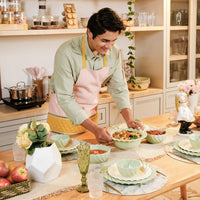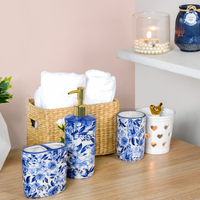Brewing is a tasteful art that takes years to perfect. Whether you have just taken up brewing as a rewarding hobby or are a skilful and experienced brewer looking to find new tricks to put up your sleeve, we have compiled a comprehensive list of brewing techniques to take your home brews to the next level. Brewing can be an exceptionally rewarding hobby because after all - what’s better than enjoying something you’ve made by hand? Join us as we walk you through all the do’s and don’ts of homebrewing. Let’s get started!
Alcoholic:
Beer
Nothing tops a chilled beer mug, especially in the sweltering heat of an unforgiving summer afternoon. Let’s start with the basics, shall we? Fermentation. Without it, we wouldn’t be enjoying our favourites, be it beer, wine, or hard cider. Let’s skip the technical jibber jabber and dive straight into what it is - a process through which yeast or bacteria turns sugar into alcohol. Fermentation is the sole phenomenon that governs all alcoholic brews. There are only four basic ingredients needed for homebrewing beer - water, malt (preferably barley), hops, and yeast.

Ingredients:
- Brewing kettle of choice: Decent-sized stockpot for larger brews, stainless steel kettles
- Plate-chiller
- BPA-free carboy
- Airlock
- Auto-siphon
- Water
- Barley
- Hops
- Yeast
Method:
- Mashing: Mashing is essentially hot water steeping to hydrate the barley to extract the sugars within the grain. If you are a beginner, go for premade extracts which come in dry or liquid form. You can then just add water to the extract to an instant wort (unfermented beer).
- In a brewing kettle, add the barley to the hot water in a grain bag, and mix.
- Maintain a temperature of 62°C and 70°C inside the kettle for about 45 minutes.
- Pull out the grain bag and get rid of it.
- Boil the water to concentrate the wort and kill any bacteria.
- Add the hops to the boiling water.
- Cool down the water by using an ice bath or a metal plate chiller.
- Pour the mixture into your plastic carboy.
- Add in your yeast.
- Attach an airlock to the mouth of your carboy to allow the carbon dioxide to escape the vessel.
- Place the setup in a cool and dark place.
- You can tell the fermentation has ended when the airlock bubbling slows down.
- Transfer to bottles or a keg using the auto-siphon.
- After bottling, make sure to rest the beer bottles in a cool and dark place for at least 1 week to reach peak carbonation.
Expert Tips:
- The optimal temperature for mashing is somewhere between 62°C and 70°C. You can use a food thermometer to take the right temperature.
- Mashing at a lower temperature helps make the wort more fermentable, leading to a higher alcohol percentage.
- The longer you boil the hops, the more bitter the brew. For an aromatic brew, minimize your boiling time.
- For ale, cool down the water to 20°C and for lagers, 12°C is the optimal temperature.
- ALWAYS use fermentation-grade bottles that can withstand pressure.
- Flip-top bottles with stoppers will save you the hassle of investing in bottle caps and a capper.
- Add some sugar to the bottles to activate the remaining yeast, induce carbonation, and make your beer more bubbly.
Cider
When life gives you apples, make delicious cider. Indulge in the subtly tart and refreshing taste of homemade cider with these simple tips and tricks. It is also one of the easiest home brews requiring little to no fancy equipment or ingredients.

Ingredients:
- Apples
- Food processor/Big pole
- BPA-free plastic fermentation container with lid and airlock
- Strainer/basket press
- BPA-free plastic container
- Airlock
- Auto-siphon
- Cultured yeast
- Sulphur Dioxide
- Beer bottles
Method:
- Cut the apples in quarters, place them in a food processor, and use the coarsest blade to create a pulp.
- Depending on the quantity, you can use either a strainer or a basket press to squeeze the pulp and release the juice. Make sure you get a 50% juice yield. (5 kgs of pulped apples should release at least 2.5 litres of apple juice)
- Collect the juice in a plastic fermentation vessel.
- You can also add some sulphur dioxide to the juice if you are worried about the sterility of the environment.
- Add in your sugar and then the cultured yeast.
- The fermentation process should start within 48 hours as can be noted by bubbling way up at the neck of the fermentation vessel.
- Store the fermentation vessel in a cool and dry area and let it rest.
- When the bubbling action around the neck of the vessel diminishes, it is an indication that the fermentation is complete.
- A sediment called lees will settle at the bottom of the fermentation vessel. You can use an auto-siphon to extract the clear cider directly into your glass bottles.
- Store in the fridge and enjoy!
Expert Tips:
- Make sure all surfaces are sanitised and decontaminated.
- If you are working with a bigger batch of apples, pop halved apples into a large bucket and use a pole to make a pulp.
- The more sugar you add, the more time the cider will take for the yeast to eat through it and ferment.
- It is important to use an airlock to let out carbon dioxide, which can otherwise build up and even cause the fermentation vessel to explode.
- It is best to use glass beer bottles that can withstand pressure.
Non-alcoholic:
Kombucha
Looking for a punchy non-alcoholic beverage that’s easy to make and good for the gut? This fermented beverage is here to tickle your fancy. Follow these simple steps to fix yourself the best kombucha you’ve ever had. We’re sure your homemade kombucha will stand strong against store-bought alternatives.

Ingredients:
- Water
- SCOBY (Symbiotic Culture of Bacteria and Yeast)
- Sugar
- Tea of choice
- Starter liquid
- Glass vessel
- Cheesecloth
Methods:
- Immerse the SCOBY in starter liquid.
- Boil some water in a saucepan, add your teabags and sugar. Wait for 6-10 minutes for the sugar to dissolve and for the mixture to brew.
- Remove the teabag from the liquid.
- Add the remaining water to the liquid and ensure that the temperature does not rise above 35°C.
- Pour the liquid into a glass vessel followed by the scoby.
- Cover the jar with a cheesecloth and secure it using an elastic band.
- Let the kombucha rest for up to 2 weeks before bottling.
- If you prefer fizz, leave the bottles untouched for a few more days for higher carbonation.
Expert Tips:
- For a bull-bodied kombucha with a fruity taste, go for black tea.
- The starter liquid is essentially leftover kombucha from an old batch. You can ask a friend who is a fellow brewer for the starter liquid.
- It is important to leave a gap of at least 5 cm at the top of the container to allow scoby growth.
Conclusion
From a frothy beer to beat the summer heat to a chilled kombucha after lunch, explore the best brewing techniques to come up with impeccable brews that not only satiate but also turn out to be swoon-worthy. Discover detailed brew recipes and clever brewing techniques that not only make the process easy and convenient but also achievable without massive fails.
Check out Nestasia's collection of glass jugs and pour chilled brews straight from the fridge into your glasses. Good brewing warrants careful and hygienic storage of things like start liquid and bacterial culture. Our airtight jars or canisters are perfect for this task. Our new Valentine's gift collection is up on our website. Be sure to explore and bag unique and thoughtful finds for your near and dear ones. From chic laptop bags to cosy throws to keep her snug as a bug, find the best Valentine's Day gifts for your girlfriend.




















